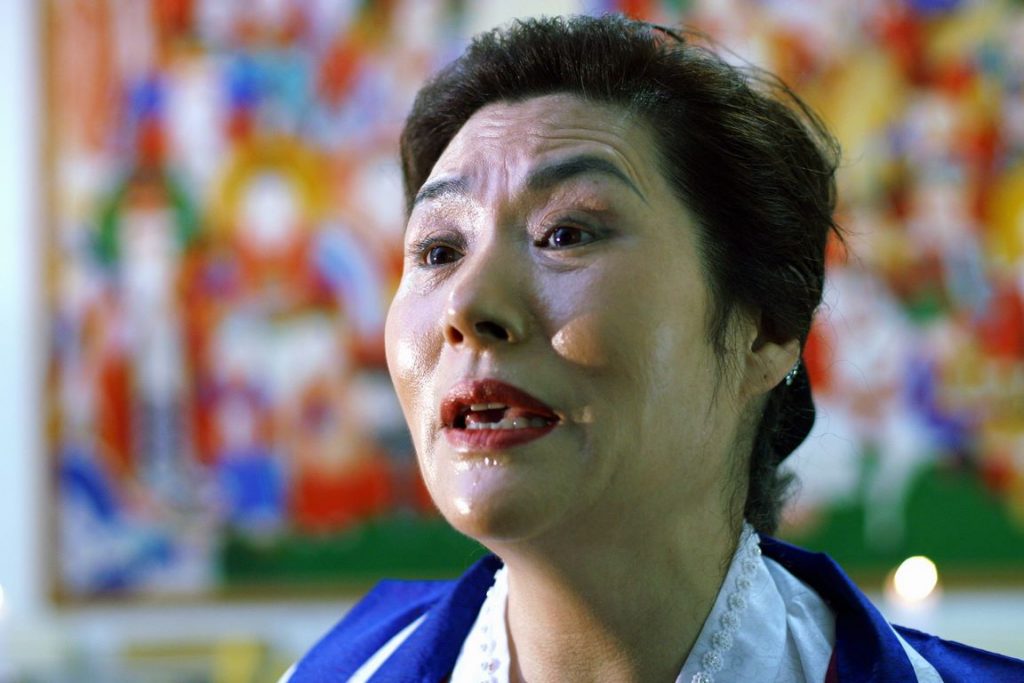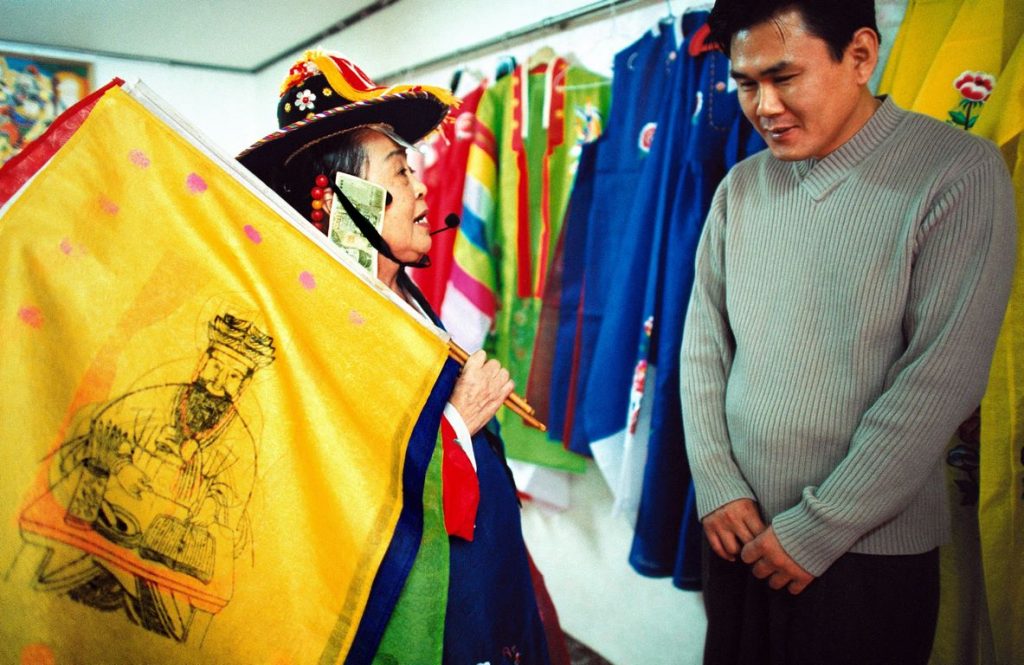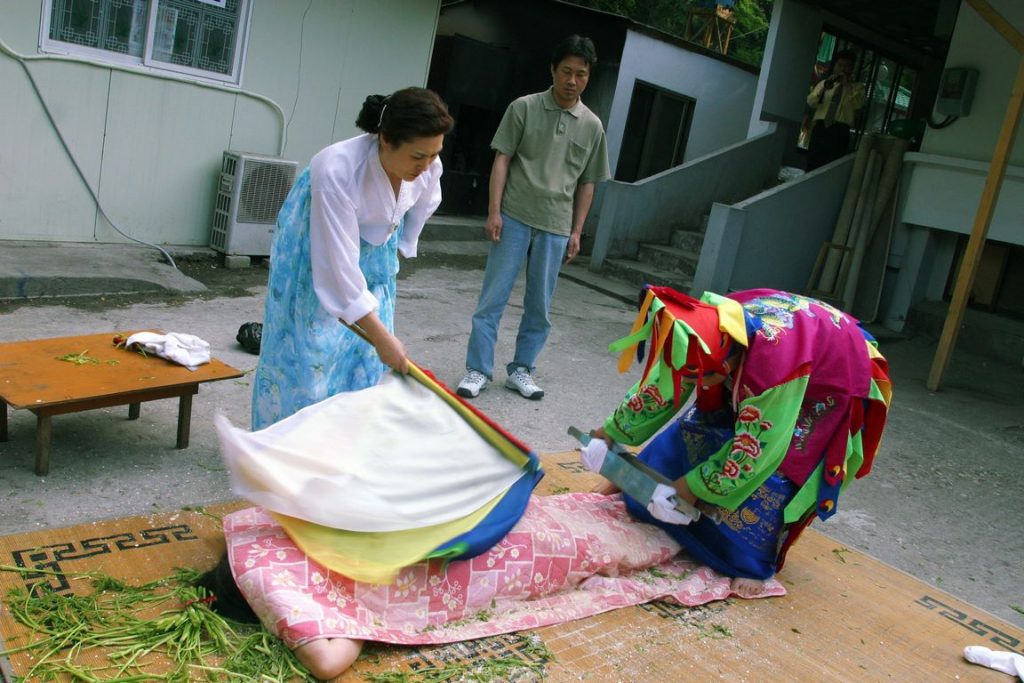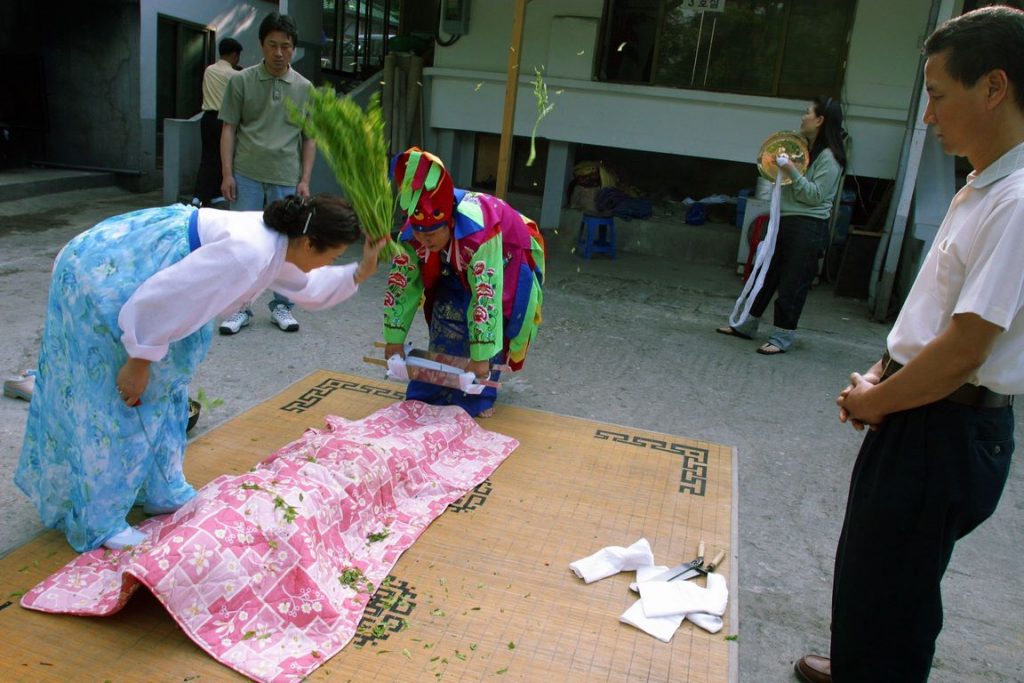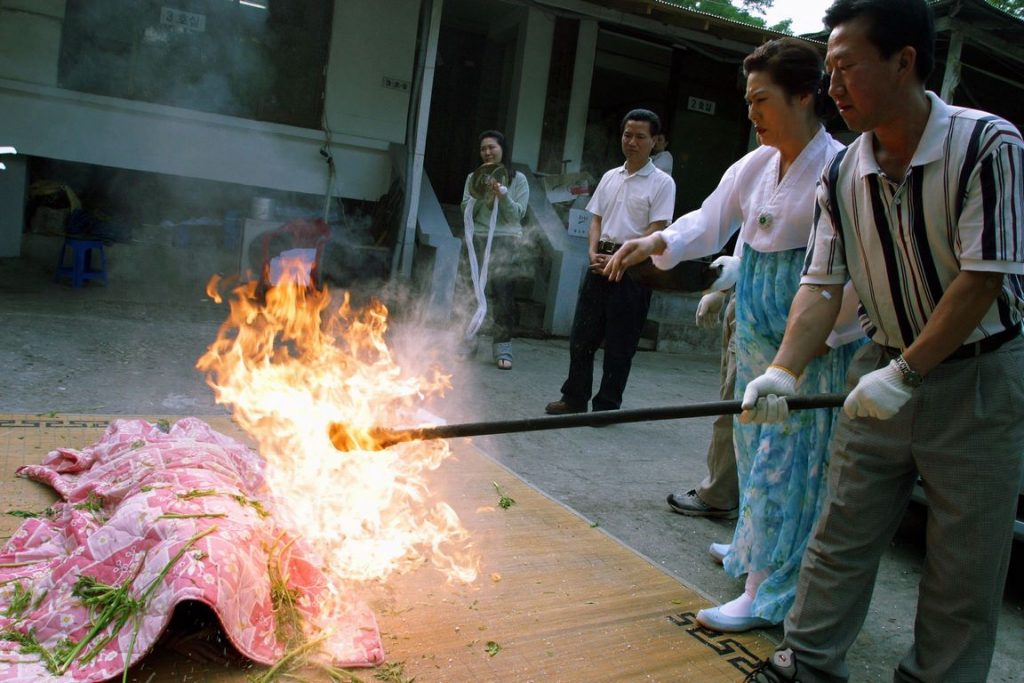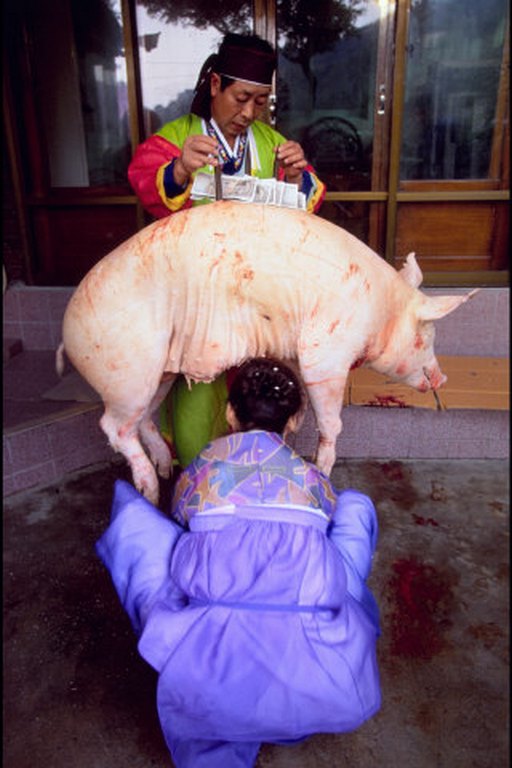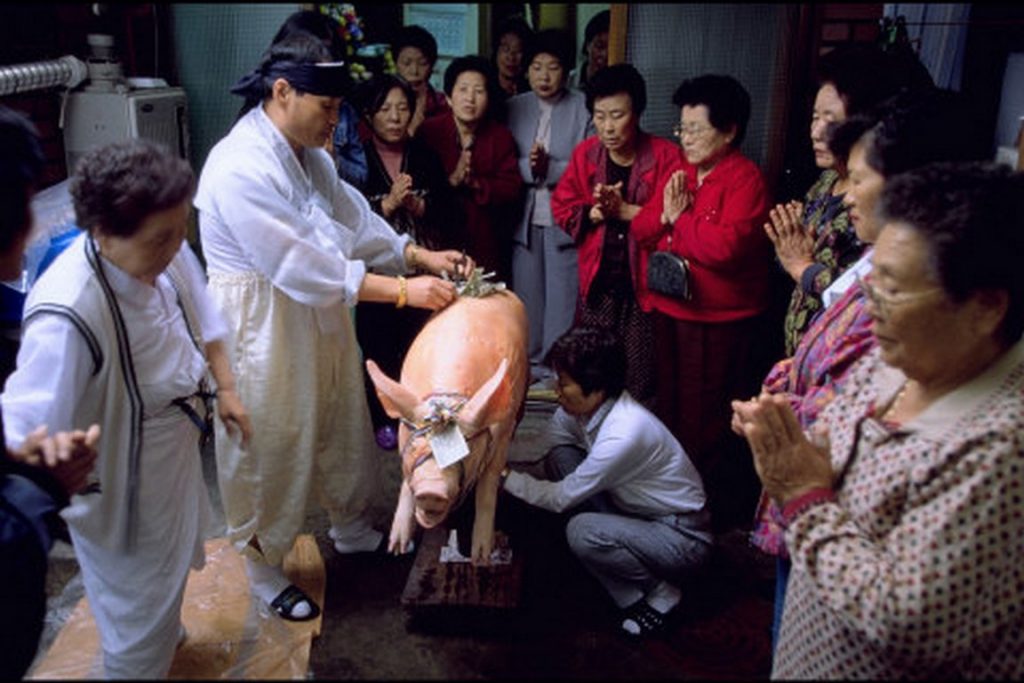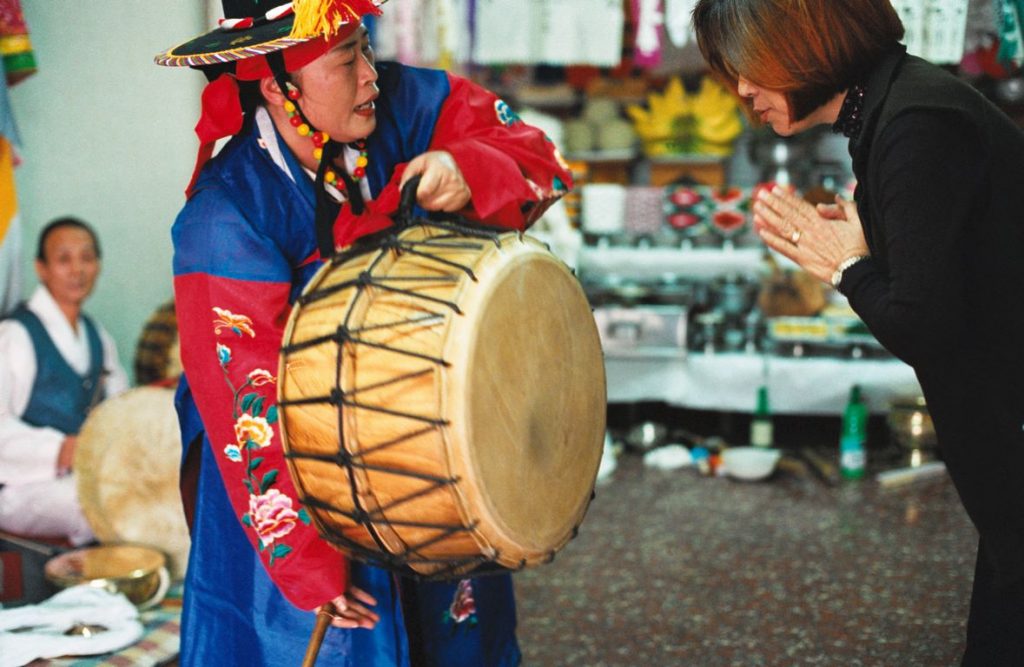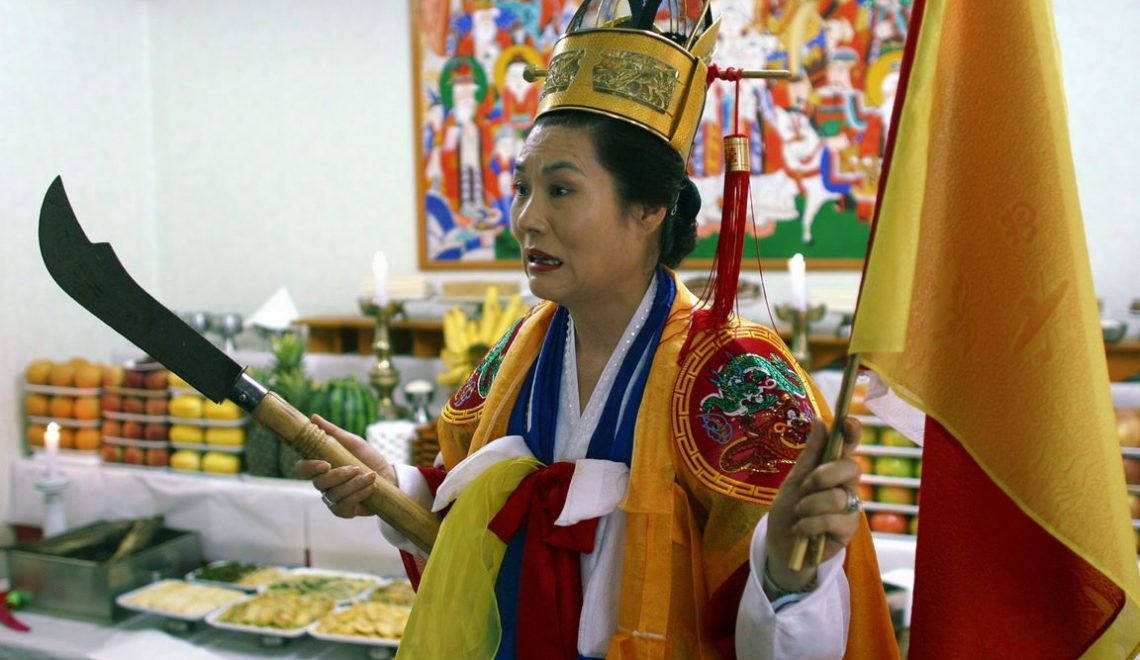
A megalopolis of almost 13 million inhabitants, a "high-tech" octopus of concrete and steel entangled in a tangle of motorways on piles, Seoul appears at first sight to be an ultra-modern city. But this cloak of neon lights and giant screens conceals an age-old culture that is still very much alive among the Koreans: shamanism. Meet these servants of the "formless".
In the buzzing heat of early summer, we follow Kim, a Korean friend, through crowded streets, in the shadow of drab skyscrapers and buildings with no horizons. We make our way through a dense, bustling crowd. After an hour on the metro, we land in a dormitory suburb: winding streets, walls splashed with colourful posters, potholed pavements. It is here, in her sanctuary house, that Kim Sun Hee welcomes us, in the midst of her "guests" for whom she is going to celebrate an "anniversary". kut "A shamanic ritual.
An intermediary between the world of the living and that of spirits
Kim Sun Hee is one of Korea's 40,000 female shamans. She has become mudang against his will at the age of 20. " It came down," she says, "after an enigmatic mental illness and three stays in hospital. I had visions. I chased these images away, but they kept coming back ". Until the day Kim Sun Hee finally comes to terms with the fact that she can only heal herself if she accepts her destiny. This illness, seen as a harbinger of things to come and the result of a call from the spirits, takes on the value of a test. Having overcome it, the individual knows that he or she will be able to act as an intermediary between the worlds of the spirits and the living through the practice of trance. After several years of hesitation and refusal, Kim Sun Hee?s destiny is finally sealed during a rite of passage, or ? kut of descent". This initiation rite, performed by an older shaman, confirms the mudang as a professional. During this ceremony, she is adorned by a divine spirit who will become her master. She is then given the main sacred instruments, such as bells and fans. But she still has to complete a three-year apprenticeship with her 'godmother' before she can practise on her own. " My spiritual mother taught me the path to follow and the rituals," she explains. As shamans, we have to help and care for poor people. We have to love people, even if they are our enemies. Keep up our courage when we are exhausted. Overcome pain and hardship. Relieve the body. Bring peace to the souls of the dead and the living. ". It's a tough road, and one that none of them are happy to embark on.
Calming the vengeful spirit
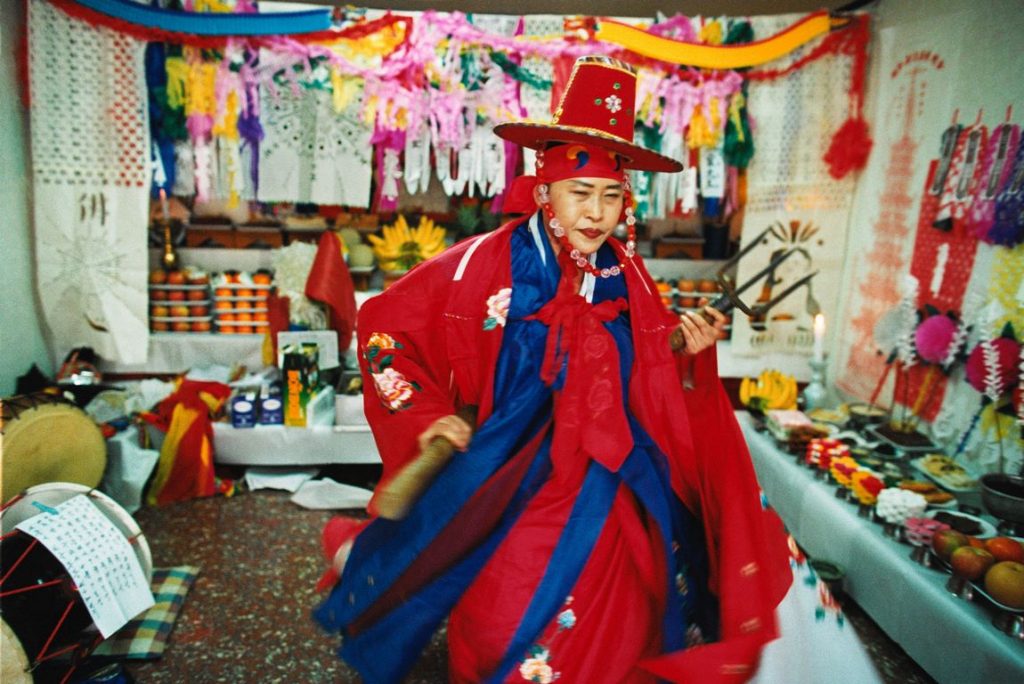
Today, Kim Sun Hee (a mudang completed or sông) is preparing to celebrate a " woowhan kut a kut of healing. The aim is to cure a patient who has not been cured by modern medicine. For the majority of Koreans, like many other peoples, there is nothing extraordinary about turning to a shaman. They share the same holistic vision of the world: animals, people, plants, rocks, rivers? all have a soul. They are parts of a whole entity in evolution and, as such, revered. Illness is not seen as limited to one part of the body, but as a break in the harmony of the whole being. It can also be caused by the spirit of a deceased person or a malevolent spirit residing in the home, spirits that only shamans can control. Visit kut is supposed to heal the sick, console the soul of the deceased who has not found rest, or appease the vengeful spirit by assisting it in the other world. A kut can last several hours, or even several days. Depending on the extent of the kut and the shaman?s talents, prices can vary from a few tens of thousands to several hundred thousand won. (For example, a day with a highly reputed shaman can cost 10,000 euros or more...).
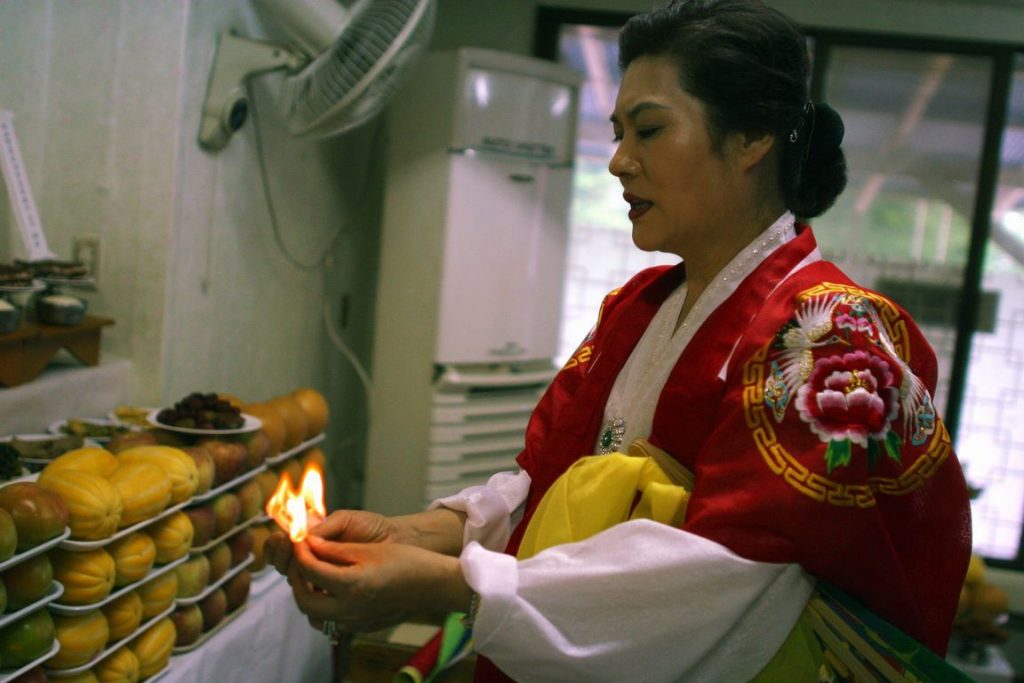
The ritual takes place in several stages and differs according to the region and the purpose of the ceremony. The session always begins with a purification ritual. The mudang enters her sanctuary alone, holding a bowl of water and ashes which she sprinkles on the floor. Guests, musicians and assistants are then ushered into the room, which is surrounded by tables covered with offerings. On the first table are the offerings to the divinities associated with the plant world (borrowed from Buddhism): lotus flowers, plant foods, cakes, fruit, water and cups of rice wine known as "rice wine". makkoli "For the mountain spirits. On the second table, carnivorous and alcohol-drinking deities are honoured. The third is the table for ancestors in general, women's patrilineal ancestors and the dead without descendants, who are also honoured by shamanism. All these altar-tables form a sacred area, which is also purified at the beginning of the session in order to chase away wandering spirits.
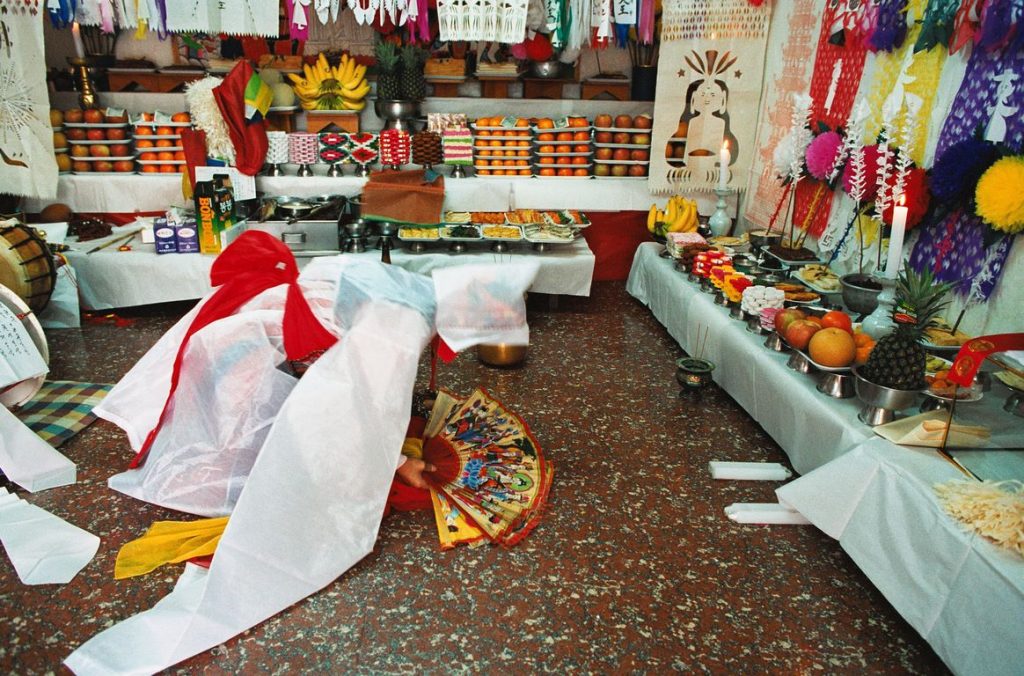
A spellbinding ritual
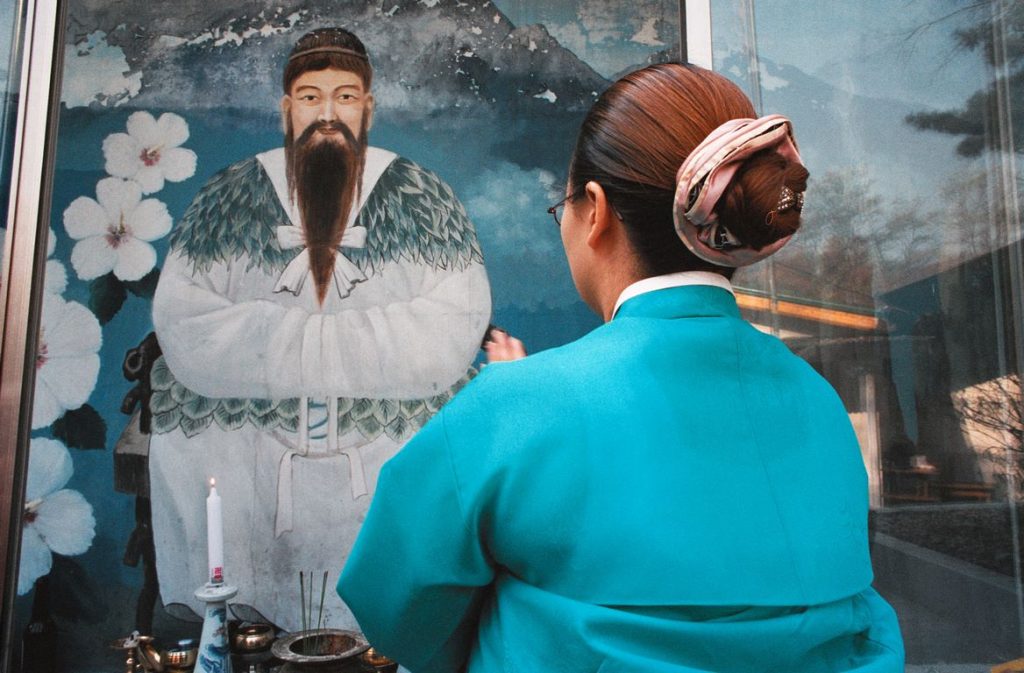
The guests light candles and incense sticks and prostrate themselves several times before a mural depicting these divinities: mountain spirits, spirits of the seven stars, earth spirits, dragon spirits? as well as a whole host of historical figures such as kings and former generals.
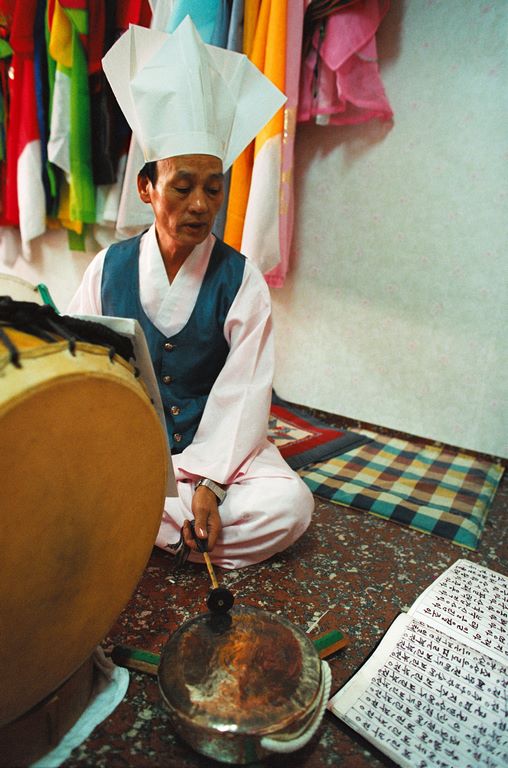
La mudang dance for a long time, until she comes into contact with the family spirits. As soon as a spirit speaks through her, her voice changes timbre and the music stops. The arrival of a spirit is marked each time by a change of clothes. In all, a dozen or so in the course of this kut.
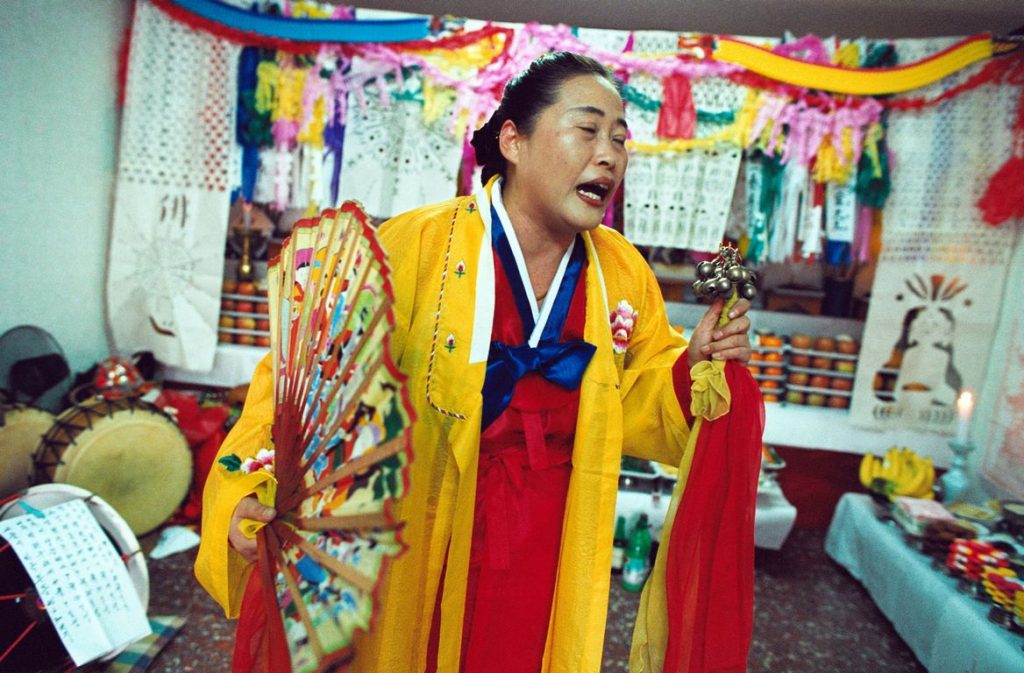
Bells in one hand, fan in the other, the mudang She then invites the vegan spirits to come and help the sick woman, and chases the others away, cursing them: "Evil spirits, go home! She then chants the oracle while chatting animatedly with her guest.

Rites of purification
She then invited the patient out into the courtyard of her house to carry out the purification rites. The young woman lies on a mat, her body completely covered by a blanket. To the rhythm of the gong, the mudang then intones the ritual incantations. She then spreads the rice stalks over the patient?s body while her assistant purifies her with a flaming torch and flags of 5 different colours: white, yellow, blue, red and green. These colours are not chosen by chance; they reflect the symbolic values of yin and yang that are supposed to govern the universe.
The ceremony continues inside the sanctuary with the divinities of the second table and the water litmus test. Sometimes shrill, sometimes gentle, the shaman?s voice spares no one. Literally possessed by the spirits she incarnates, to the point of reproducing their mimics and tics, Kim Sun Hee doesn't hesitate to ask her patient very direct and indiscreet questions, if the patient's embarrassment is anything to go by. It's not uncommon for marital unravelling and private secrets to come out during these sessions, which at times turn into a kind of public confession/psychoanalysis. One after another, the spirits invoked express themselves through the shaman?s voice and communicate with the patient and her family. We cry, we shout, we laugh, we forgive each other, or so we understand.
The ordeal of the pig
The so-called "pig test" is a very spectacular event: it involves balancing the carcass of a suckling pig on a trident - a sign that the evil spirits are no longer haunting the place. But first, the spirits are often unhappy and demand more offerings? To appease their anger, the participants then have to distribute the won. With its snout and ears stuffed with money, the pig is then greeted by everyone.
Lastly, the ancestors are honoured. And when they speak, the young woman seems electrified and trembles with fear while beating her chest. Once the oracle is over, the farewells between the living and the spirits of the ancestors are always moving: everyone bursts into tears, apologises or congratulates each other. Visit kut The emotion dies down. The shaman passes swords around the bodies of the participants to chase away wandering spirits, and the ritual food is shared by all or distributed to neighbours.
At the end of the kutlife goes on. The dialogue between the human world and the afterlife has healed wounds, restored order to families and given courage to all. As timeless mediators, the shamans enable an entire society to absorb the shocks of modernity gently by linking it to its past and creating meaning. A bridge stretched between this world and the next.
An essential practice
In South Korea, shamanism is a true religion. Although it probably has Siberian origins, it has its own characteristics and occupies a special place. It was present here long before Confucianism, Buddhism and Taoism, which were introduced from China in the fourth century AD. It more or less dictates the concept of life and death, as well as that of the cosmos, and has done so since the Dangun myth relating to the founding of Korea (2333 BC). It's a real challenge," explains Min Sook Le, who has a doctorate in French literature and Korean studies (literature) and teaches Korean at Lyon 3.
It is mainly a practice dominated by women (their male equivalent is the paksubut it is much rarer). There are two types of shaman naerim mudang who are chosen by the spirits after an illness, delirium, hallucination or vision. They are gifted with supernatural powers of healing and divination, and their " kut "This can be very expensive. Visit haksup mudangbecome " mudang They are "apprenticed" to a family of hereditary shamans. They have no transcendental powers or divination, and their role is limited to performing rites organised for all kinds of events.
From the kosa It is a "ritual" performed for the inauguration of a building, a factory, a film shoot, etc., and which no company director would omit for fear of incurring the wrath of the spirits and going bankrupt. kut "Shamanic ceremonies, which are traditionally performed at the time of a birth, a bereavement, a wedding or to bring a wayward husband home, are an omnipresent part of everyday Korean life.
Text Brigitte Postel
Photos : Pierre Bessard
This report was published in issue no. 3 of the magazine Natives sold by subscription or single issue https://www.revue-natives.com/editions/natives-n03/

